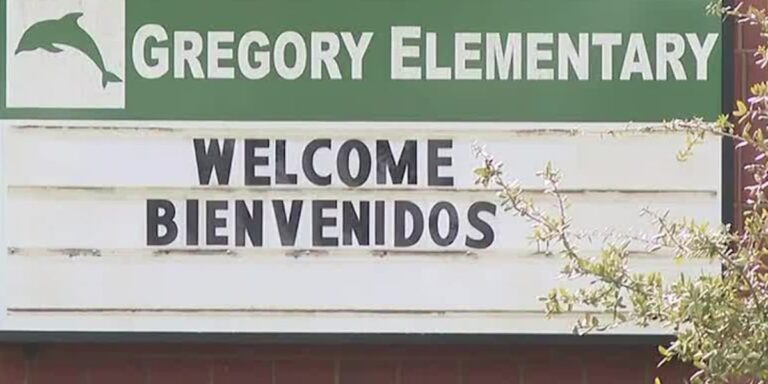Southern California Officials Respond to Racist Texts Sent to Students
Southern California Officials Address Racist Texts to Students
Racism has been a long-standing issue in various shapes and forms, and every time it rears its ugly head, it reminds us of how work still needs to be done. Recently, Southern California officials were shaken by a disturbing submission of racist text messages sent to students, particularly targeting Black youth. This alarming incident has sparked a wave of outrage, calls for action, and a conversation about the urgency of addressing racism in our schools and communities. Let’s dive deep into this pressing issue, the responses it has elicited, and what steps can be taken to foster a more inclusive environment.
The Disturbing Context: What Happened?
Imagine receiving a text message that’s not just unwelcome but filled with hate. That’s exactly what some students experienced when they were bombarded with racist and derogatory messages. Reports indicated that these were not isolated incidents but rather part of a broader pattern of harassment that negatively affected the school community. It’s a stark reminder that, despite progress made in social justice, certain attitudes remain stubbornly entrenched.
Local authorities and educational officials sprang into action upon becoming aware of the situation. They firmly condemned these acts of racism, branding them as “disturbing” and “unacceptable.” But what does that condemnation really achieve? Is it enough to just call out these behaviors, or do schools need to take stronger measures to combat hate? The answers might just lie in how well we can foster school environments that promote respect and understanding instead of hate.
Official Reactions: What Are They Saying?
In response to these incidents, school district officials have emphasized their commitment to creating a safe environment for all students. Many have put out statements expressing solidarity with affected students and families. But, let’s face it: words alone won’t cut it. For many students, especially those who have been targeted, mere statements of support can feel like a band-aid on a bullet wound.
Calls for Action
-
Transparency in Investigation: Parents, students, and community members want transparency in how the schools are handling the investigation. It’s not just about knowing that something is being done but understanding the steps that are being taken to ensure those responsible are held accountable.
-
Engaging Students Directly: Schools that fail to involve students in the conversation about how racial issues impact their daily lives may miss the mark. Workshops and open forums where students can voice their concerns and feelings can be crucial. After all, who better to shed light on the problem than those experiencing it first-hand?
-
Educational Programs: The implementation of educational initiatives aimed at fostering discussions around race, diversity, and inclusion cannot be overlooked. Some schools have begun to launch diversity training programs, not just for students, but for faculty and staff as well. This means more tools for understanding and empathy in dealing with the issue.
- Community Partnerships: Collaborating with community organizations can also amplify the efforts to combat racism. Inviting local activists, mental health professionals, and educators can help schools widen their resources and reach.
De-stigmatizing Conversations Around Race
It’s essential to grapple with the challenge of discussing race in educational environments. Often, these topics are sidelined, creating schools that remain ill-equipped to tackle racism when it arises. It’s almost like ignoring an elephant in the room—just because you don’t talk about it, doesn’t mean it’s not there!
Creating Safe Spaces
Establishing safe spaces for dialogue can be transformative. Students should feel empowered to share their experiences and fears without judgment. This could involve:
- Anonymous Reporting Systems: These systems can allow students to report incidents without fear of retaliation.
- Peer Support Programs: Creating systems where students can support each other fosters community and connection against isolation and victimization.
The Role of Educators
Teachers are often on the front lines of battling ignorance and insensitivity in the classroom. By equipping educators with training in cultural competency, schools can create a more informed staff who are better prepared to recognize and address racist behavior.
The Growing Crisis Across the Nation
While this incident in Southern California has drawn attention, it’s vital to recognize that such incidents are not localized. Across various states, schools have been wrestling with similar challenges. Whether it’s in texts or on social media platforms, the virtual world often magnifies the reach of hatred.
Effects on Students
But what are the broader implications of sending such texts? The psychological impacts on targeted students can be profound and long-lasting. We’re talking about potential drops in academic performance, mental health struggles, and overall lower self-esteem. The question arises: how many bright futures are dimmed by this type of behavior?
Strategies for Long-term Change
Addressing racism in our schools isn’t just a temporary fix; it’s about creating lasting change within the system. Here are some vital strategies that could aid long-term transformation:
-
Holistic Educational Curriculum: Develop a curriculum that includes perspectives from diverse backgrounds. This enriches the educational experience while promoting understanding and empathy.
-
Mentor Programs: Establish mentorship roles where older students can help younger or struggling students, especially those who may feel marginalized.
-
Engaging Parents and Guardians: Education doesn’t stop at school. Programs that involve parents can extend the message of respect and inclusivity into the home.
- Empowering Student Leadership: Encourage student-led initiatives focused on diversity and inclusion. Give students a voice, and watch how empowered they become in advocating for change.
Navigating the Future: A Collective Effort
The moment is increasingly clear that combating racism, especially in educational institutions, requires a concerted collective effort. It’s about ensuring that the students who are meant to be nurtured and educated aren’t subjected to any form of disrespect or inequality. While officials are responding and making statements, the real change will depend on sustained commitment and action across all levels—educators, students, parents, and the broader community.
It’s also about building resilience among students so they know they are not alone, and that support is available to them. After all, racism is not just a “school problem” but a societal issue that calls for unified action.
Conclusion
In conclusion, the racist texts targeting students in Southern California are an alarming reminder of the work that lies ahead in creating inclusive and respectful communities. While officials have responded with condemnations and promises of investigations, what truly matters are the actions that follow. Creating spaces for open dialogue, implementing comprehensive educational programs, and fostering resilience among students can serve as crucial steps toward lasting change. As we move forward, let’s remain committed to nurturing an environment where respect, dignity, and inclusivity stand front and center. Only then can we begin to dismantle the systems of racism, one conversation, one student, and one school at a time.
FAQs
Q1: What kind of text messages were sent to students?
A: The messages were racist and derogatory, specifically targeting Black students.
Q2: How have school officials responded to these incidents?
A: School officials have condemned the actions, pledged to investigate, and expressed their commitment to create a safe environment for all students.
Q3: What measures can schools implement to combat racism?
A: Schools can create transparency in investigations, engage students directly, provide educational programs, and build partnerships with community organizations.
Q4: What psychological effects can such incidents have on students?
A: Targeted students may face decreased academic performance, mental health issues, and potentially lower self-esteem as a result of the harassment.
Q5: How can communities support schools in fostering inclusivity?
A: Communities can support schools through partnerships, volunteer programs, and parent involvement in discussions about diversity and inclusion.







